Throughout the history of cancer research, in both the conventional and alternative cancer research realms, there has been a cause and effect relationship that has been largely ignored. The ability of a cell to divide, whether it be a malignant or non-malignant cell, is dependent on cell volume, as well as membrane potential. As you will learn, there is also a relationship between cell volume and membrane potential.
Cells that are cycling (dividing), progress through the following phases: G1 (Gap 1) – this is the
phase where the cell is preparing for the next phase, which is the S phase, or DNA Synthesis phase. Once DNA synthesis is complete, the cell enters the G2 phase (G 2), where it prepares to enter the final phase, called the M phase, or mitosis. During mitosis, the cell divides into 2 cells. The cell volume is at its smallest at G1, and gradually increases its volume until it reaches its largest volume in the M phase. This should be intuitive, because the cell must become large enough to divide and then support two cells.
Throughout the cell cycle, the cell is constantly monitoring the volume. If the cell does not reach the desired volumes, the cell will be unable to progress to the next phase. There is a G1/S transition “checkpoint,” which commonly causes the cell to arrest at this intermediate stage, if adequate volume is not reached. When a cell is arrested due to inadequate volume, there are two possible ensuing events: either the cell will leave the cycle and enter G0, and become a dormant, non-cycling cell, or the cell will be recognized as non-viable, and undergo mitochondrial-induced programmed cell death (apoptosis).
Interestingly, cell volume correlates with cell membrane electrical potential. Cells that are rapidly dividing are in the “depolarized” state; meaning they have less negatively charged particles in the intra-cellular space relative to the extra-cellular space. Cells that are not able to divide are “hyperpolarized;” meaning they have much greater amounts of negatively charged particles in the intra-cellular space relative to the extra-cellular space. Bottom line: Rapidly dividing cells have large volume and are depolarized, while non-dividing cells have small volume and are hyperpolarized.
healthyliving May 3rd, 2017
Posted In: Cancer Prevention
Tags: cancer, cancer care, cancer prevention, cell volume

A plethora of data exists regarding the benefits of calorie restriction. Calorie restriction has been shown to increase healthspan and lifespan in all species studied. Interestingly, calorie restriction, or intermittent fasting, has been shown to be beneficial to cancer patients undergoing chemotherapy; https://news.usc.edu/103972/fasting-like-diet-turns-the-immune-system-against-cancer/
A study led by Valter Longo, was published in the journal Cancer Cell on July 11, days after BMC Cancer published a separate study showing that a pilot trial of the three-day, fasting-like diet was “safe and feasible” for 18 cancer patients on chemotherapy. The mouse study on skin and breast cancers is the first study to show that a diet that mimics fasting may activate the immune system and expose the cancer cells to the immune system,” Longo said. The two studies’ findings build upon prior research that showed a short-term fast starves cancer cells and facilitates the chemo drug therapies to better target the cancer.
Another more recent study showed that a low-calorie, fasting-mimicking diet can slow multiple sclerosis by killing off bad cells and generating new healthy ones. The results of this latest mouse study are striking since chemotherapy’s side effects include immunosuppression. The researchers found that the fasting-mimicking diet, when used with chemotherapy drugs, raises the levels of bone marrow cells that generate immune system cells, such as T cells, B cells and “natural killer” cells that infiltrate tumors.
In the mouse study, scientists saw another significant effect of the diet: the “T regulatory” cells which protect the cancer cells were expelled. They also found three cycles of the fasting diet, combined with doxorubicin, prompted a 33 percent increase in the levels of cancer-fighting white blood cells and doubled the number of progenitor cells in the bone marrow. The cancer-killing cells were also more effective at attacking and shrinking the tumors. The research team also found that 72 hours of fasting, in patients undergoing chemotherapy, is associated with lower side effects, compared with fasting for 24 hours. This raises the possibility that a doctor-monitored, fasting-like diet could bolster the effectiveness of immunotherapy on a wider range of cancers.
You can access this study here.
~ Dr. Rosenberg
healthyliving May 2nd, 2017
Posted In: Cancer Prevention
Tags: calorie restriction, cancer, cancer prevention, fasting
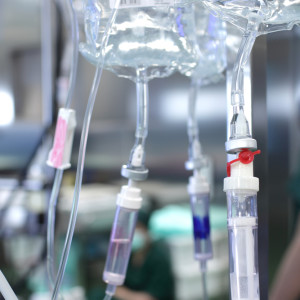
The following is an important article. It stated the following: Stage IIIA patient pairs with Non-small cell lung cancer demonstrated a higher overall survival for patients treated with chemo-radiation (16.5 months) versus no treatment (6.1 months; P < .0001). Similarly, Stage IV patient pairs (19,046) had a higher OS when treated with chemotherapy (9.3 months) versus no treatment (2.0 months; P < .0001). Simplifying this, you would live 10.4 months longer if you were diagnosed with stage 3 cancer and had chemotherapy and radiation (with no mention of side effects) vs. doing NOTHING, and you would live 7.3 months longer if you had stage 4 cancer and had chemotherapy and radiation, vs. doing nothing. This is a small benefit over doing NOTHING.
~ Dr. Rosenberg
The full article is available here.
healthyliving April 26th, 2017
Posted In: cancer care, Cancer Prevention
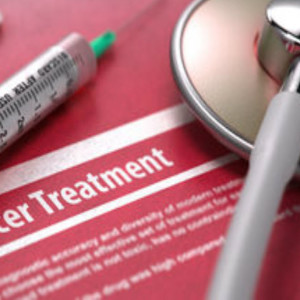
The answer to this question, as I have personally learned in my practice, is to use everything that works. Unlike the pharmaceutical method, one size does not fit all. What works for one patient’s cancer may not work for the next.
Because the mechanism of progression of cancer is extremely complex and multifaceted, one must often treat with many different modalities. In addition, not only is every cancer genetically unique, but it’s constantly changing; cancer is a dynamic disease because of constant mutations.
The idea of treating everyone with the same cancer, using the same chemotherapy, is absurd to any cancer scientist. One should not even use chemotherapy without knowing the genetics of the cancer. This explains why some patients get no benefit from chemotherapy, and some get a temporary response; it’s pot luck. If you are lucky enough to get chemotherapy that fits your cancer, you may get a temporary response.
Why don’t we do genetic testing on all cancer patients? Once again, it comes down to money. Doing genetic testing on all cancer patients would be as cost-effective as making a different dose of blood pressure medicine for every individual in the country.
Here is an abbreviated summary of the drugs and modalities I use in my treatment of advanced stage cancer.
1) Immunotherapy; to stimulate the innate immune system;
a) Coley’s toxins consists of heat-killed bacteria that stimulate the innate immune system to attack abnormal cells, including cancer. GcMAF is a macrophage activating factor that is normally inhibited by cancer cells.
b) Interleukin-2 is a substance produced by the body that stimulates production of cytotoxic T cells, which can kill cancer cells.
c) Whole body hyperthermia is a process where the patient is warmed to a temperature of up to 104 degrees Fahrenheit. Increased temperature stimulates increased innate immune function.
2) Glycolytic inhibitors; DCA, or dichloroacetate inhibits the cancer cells’ ability to utilize sugar, while promoting normal mitochondrial oxidative phosphorylation (cancer cells that use oxidative phosphorylation are more susceptible to being destroyed).
3) Matrix metalloproteinase inhibitor; cancer cells “dig in” by secreting an enzyme that breaks down tissue. Low dose doxycycline inhibits release of this enzyme.
4) Angiogenesis inhibitors; tumors can not grow without sprouting new vessels. Vessel formation is dependent on adequate amounts of copper;. If copper is depleted, tumors can not develop more blood vessels. Ammonium tetrathiomolybdate, chelates copper, thereby inhibiting angiogenesis.
5) Cancer cell cytotoxic agents; vitamin C, at high doses intravenously, when used with vitamin K3 at a ratio of 100:1, is preferentially cytotoxic to cancer cells, while leaving normal cells unharmed.
6) Mitosis inhibitors; cancer cells divide rapidly through a process called mitosis. Mitosis occurs through a process known as spindle formation. During spindle formation, spindles pull the chromosomes to opposite sides of the cell, in preparation for cell division. Noscapine, an opioid agonist binds to the spindles, inhibiting mitosis.
7) Aromatase inhibitors; research has shown that several cancers, including breast, cervical, uterine, lung, and colorectal, often fuel their growth through the production of estrogen. Aromatase inhibitors block production of estrogen.
8) IGF-1; IGF-1, or insulin-like growth factor-1 is a growth factor that often fuels cancer growth. Octreotide inhibits the production of IGF-1.
9) GnRh agonists; GnRh agonists, or gonadotropin releasing hormone agonists may inhibit cancer in 2 ways. GnRh inhibits production of the sex steroids; if the cancer is dependent on sex steroids, GnRh will slow cancer growth. In addition, many cancers have receptors for GnRh, which when stimulated, inhibit cancer growth.
10) Many other drugs and natural supplements are often used as well, depending on the specifics of the patient’s cancer.
Using all of the above modalities, I have been able to cut off many pathways of cancer growth, often converting an acutely progressive disease, into a stable, chronic disease.
What will it take to awaken the masses? What will it take to educate the medical professionals that advanced stage cancer can be treated as a chronic disease right now? I do not know the answer to this question. If I knew, I would already be doing it.
In the meantime, I continue on my journey, with the minority of physicians who care to make a difference, no matter what the consequences.
~ Dr. Rosenberg
healthyliving April 18th, 2017
Posted In: cancer care, Cancer Prevention
Tags: advanced stage cancer, cancer prevention, stage iv cancer, treatment
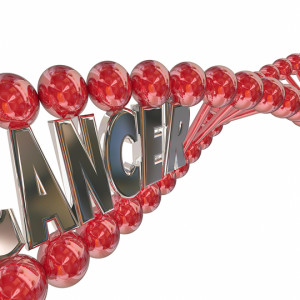
EMT transition, refers to the conversion of cells that have the epithelial phenotype (meaning they stay local and adhere to a basement membrane), to cells that have a mesenchymal phenotype (meaning they develop the ability to invade and migrate). This study showed that 300 micrograms per day of selenized yeast, for 5 weeks, downregulated the expression of genes associated with invasion, migration, and inflammation.
The Nutritional Prevention of Cancer (NPC) trial showed that 200 μg selenized yeast per day reduced the incidence of prostate cancer, and advanced prostate cancer in particular. More recent studies, however, did not consistently confirm a protective effect of selenium for prostate cancer. Results of the Selenium and Vitamin E Cancer Prevention (SELECT) trial demonstrated that supplements with 200 μg L-selenomethionine did not decrease the incidence of prostate cancer among men in the general population. Similarly, in men at high risk for prostate cancer, 200-400 μg of selenized yeast per day was not effective for prostate cancer prevention.
So how can we account for the discrepancies? In the NPC trial, specifically the participants with relatively low selenium status at baseline (selenium <123.2 μg/L) seemed to benefit from the intervention with selenized yeast. Baseline selenium levels of the participants of the SELECT trial were relatively high (median 135 μg/L). The median selenium level of participants in this trial was 81 μg/L and increased to 185 μg/L after the intervention. Based on experimental studies in dogs and a number of observational studies in humans, a U-shaped dose response curve for selenium status and several health outcomes was suggested.
So the bottom line is: every substance has a U-shaped curve: too little, not effective; too much toxic effects. Measure your patient’s selenium levels before considering supplementation.
Based on the following journal article, Chiang, Emily; Defining the Optimal Selenium Dose for Prostate Cancer Risk Reduction: Insights from the U-Shaped Relationship between Selenium Status, DNA Damage, and Apoptosis; Dose Response. 2010; 8(3): 285–300, a selenium level of 119 to 137 μg/L in plasma appears optimal.
~ Dr. Rosenberg
healthyliving April 10th, 2017
Posted In: cancer care, Cancer Prevention
Tags: prostate cancer, selenium
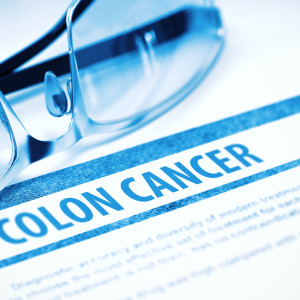
The following study from the Dana Farber Cancer Institute reveals the connection between colorectal cancer containing the bacterium Fusobacterium nucleatum. A plethora of data has revealed that your gut microbiome can affect your risk for disease, as well as an immune response to illness and disease. Animal studies using the latest immunotherapy drugs for cancer (PD-1 inhibitors and CTLA-4 inhibitors) have shown that the animal’s gut bacterial flora plays a large role in determining whether these drugs will be effective.
Bottom line: Consider studying your patients’ bacterial flora and ALWAYS ensure they regularly take a quality probiotoc.
~ Dr. Rosenberg
A new study provides some of the strongest evidence to date that microorganisms living in the large intestine can serve as a link between diet and certain types of colorectal cancer, the lead authors at Dana-Farber Cancer Institute and Massachusetts General Hospital report.
The paper, published online today by JAMA Oncology, focuses on Fusobacterium nucleatum, one of hundreds of types of bacteria that dwell in humans’ large intestines, and one that is thought to play a role in colorectal cancer. By tracking the diets of more than 137,000 people for decades and examining more than 1,000 colorectal tumor samples for F. nucleatum, the researchers determined that individuals with a “prudent” diet – rich in whole grains and fiber – had a lower risk of developing colorectal cancer containing the bacterium, but their risk for colorectal cancer that lacked the bacterium was essentially unchanged.
Prudent diets appear to protect against colorectal cancer. The new study suggests that healthy foods may achieve these benefits, in part, by altering the relative amounts of various microorganisms in the digestive tract, including F. nucleatum.
“Though our research dealt with only one type of bacteria, it points to a much broader phenomenon – that intestinal bacteria can act in concert with diet to reduce or increase the risk of certain types of colorectal cancer,” said Shuji Ogino, MD, PhD, of Dana-Farber, Harvard T.H. Chan School of Public Health, and Brigham and Women’s Hospital, the co-senior author of the study with Charles Fuchs, MD, MPH, director of the Gastrointestinal Cancer Center at Dana-Farber and Brigham and Women’s, and Andrew Chan, MD, MPH, of Massachusetts General Hospital, Brigham and Women’s, and the Broad Institute of MIT and Harvard.
“These data are among the first in humans that show a connection between long-term dietary intake and the bacteria in tumor tissue. This supports earlier studies that show some gut bacteria can directly cause the development of cancers in animals,” added Chan.
The research drew on dietary records of 137,217 participants in the Nurses’ Health Study and Health Professionals Follow-up Study – large-scale health-tracking studies – some of whom developed colon or rectal cancer over a period of decades. The researchers measured the levels of F. nucleatum in the patients’ tumor tissue and blended these data with information of diet and cancer incidence.
“Recent experiments have suggested that F. nucleatum may contribute to the development of colorectal cancer by interfering with the immune system and activating growth pathways in colon cells,” Ogino remarked. “One study showed that F. nucleatum in the stool increased markedly after participants switched from a prudent to a Western-style, low fiber diet. We theorized that the link between a prudent diet and reduced colorectal cancer risk would be more evident for tumors enriched with F. nucleatum than for those without it.”
That is precisely what the study results showed: Participants who followed a prudent diet had a sharply lower risk of developing colorectal cancer laden with F. nucleatum. But they received no extra protection against colorectal cancers that didn’t contain the bacteria.
“Our findings offer compelling evidence of the ability of diet to influence the risk of developing certain types of colorectal cancer by affecting the bacteria within the digestive tract,” Ogino commented.
“The results of this study underscore the need for additional studies that explore the complex interrelationship between what someone eats, the microorganisms in their gut, and the development of cancer,” said Chan.
Source: Dana-Farber Cancer Institute
The lead authors of the paper are Raaj Mehta, MD, of Mass General, Yin Cao, ScD, of Mass General and Harvard T.H. Chan School of Public Health, and Reiko Nishihara, PhD, of Dana-Farber, Brigham and Women’s, the Broad Institute, and Harvard T.H. Chan School of Public Health. Co-authors are Kosuke Mima, MD, PhD, Zhi Rong Qian, MD, PhD, Keisuke Kosumi, MD, PhD, Tsuyoshi Hamada, MD, PhD, Yohei Masugi, MD, PhD, Susan Bullman, PhD, and Jeffrey Meyerhardt, MD, MPH, of Dana-Farber; Wendy Garrett, MD, PhD, of Dana-Farber, the Broad Institute, and Harvard T.H. Chan School of Public Health; David Drew, PhD, of Mass General; Mingyang Song, MD, ScD, of Mass General and Harvard T.H. Chan School of Public Health; Jonathan Nowak, MD, PhD, and Xuehong Zhang, MD, ScD, of Brigham and Women’s; Aleksandar D. Kostic, PhD, of the Broad Institute; Kana Wu, MD, PhD, and Curtis Huttenhower, PhD, of Harvard T.H. Chan School of Public Health; Teresa T. Fung, ScD, RDN, of Simmons College; Walter Willett, MD, DrPH, and Edward Giovannucci, MD, ScD, of Harvard T.H. Chan School of Public Health and Brigham and Women’s.
This work was supported by U.S. National Institutes of Health (grants P01 CA87969, UM1 CA186107, P01 CA55075, UM1 CA167552, P50 CA127003, R01 CA137178, K24 DK098311, R01 CA202704, R01 CA151993, R35 CA197735, and K07 CA190673); and by grants from The Project P Fund for Colorectal Cancer Research, The Friends of Dana-Farber Cancer Institute, Bennett Family Fund, and the Entertainment Industry Foundation through National Colorectal Cancer Research Alliance.
healthyliving March 14th, 2017
Posted In: cancer care, Cancer Prevention
Tags: colon cancer, colorectal cancer, diet an colon cancer, intestinal microorganisms, nucleatum, pancreatic cancer
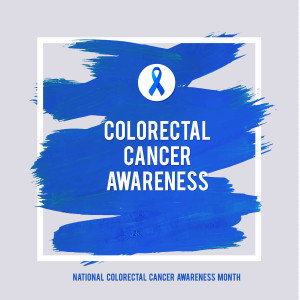
March is National Colorectal Cancer Prevention month so I thought I’d give my readers some tips about how to prevent colon cancer. More than 90% of people diagnosed with colon cancer are over the age of 50 – the age recommended for initial screening. If you’re over age 50, you’ll want to read about what’s new in colon cancer research as well as what you can do to prevent getting it.
Colon Cancer Awareness
The Centers for Disease Control (CDC) says that 140,000 people every year are diagnosed with colon cancer and more than 50,000 people die from it. Yet, this does not have to be the case. The good news is that colon cancer can be cured if found early and underscores the importance of screening.
Risk
Colon cancer affects men and women equally and your risk for getting it increases with age. It is thought associated with poor diet – low nutrient, high dietary toxin – intake. It can be hereditary as well – it tends to repeat throughout family generations. It also has a higher risk of occurrence with people who have inflammatory bowel conditions like irritable bowel syndrome, diverticulitis, or Crohn’s disease.
Symptoms
The symptoms of colon cancer are usually few, if any, but may include: change in bowel habits (going too much, not enough), persistent stomach pain, cramps, blood in stool, or unexplained weight loss and chronic fatigue. Of course, having these symptoms does not necessarily mean colon cancer; they can also accompany other issues. Yet, if you have these symptoms that continue, do see your doctor for further investigation.
Screening Tests
Health researchers recommend colon screening soon after the age of 50. This can consist of:
Having a sigmoidoscopy or colonoscopy is not painful. Yet, the preparation for them can be a little uncomfortable in that it causes you to empty your bowel frequently. Recently, some commercial preparations have been found to have unhealthy side effects. These have been replaced by milder regimens that clean the bowel sufficiently without the side effects. You may experience some skin irritation from going so often, however.
How To Prevent Colon Cancer
I always tell my patients that preventing disease is much easier than treating it. Colon cancer is usually associated with poor diets such as high animal fats, low fiber, not enough antioxidants, high alcohol and other dietary toxins – like nitrite food preservatives – intake.
Keeping the colon healthy and cancer-free has a lot to do with something called ‘transit time’. This is the amount of time it takes for digestion to take place and waste to leave your body through bowel movements. If your transit time is slow, due to low fiber, lack of adequate water intake, and you tend to be constipated often, toxins can adhere to your bowel easily.
Recent research has shown that high fiber foods like bran, brown rice, fruits and vegetables, increase transit time to get rid of waste toxins much faster. It is recommended that you eat at least 25 grams of fiber a day. One bowl of high fiber bran cereal has about 14 grams of fiber in it – eating at least 1 serving a day, in addition to other fiber-nutrient dense foods, will help lower your risk of colon cancer. According to a Loma Linda University study, people who ate brown rice (a high fiber grain) at least once a week reduced their risk of colon cancer by 40%.
Other research out of the Dana-Farber Cancer Institute has shown that diets high in starchy carbohydrates and refined sugars – i.e. cakes, pastries, cookies, other dessert foods – up the risk for colon cancer. These foods raise blood sugar and insulin levels which create inflammation throughout the entire body. Similarly, people who are obese and/or have diabetes, are at higher risk for developing colon cancer.
Vitamins A and E (both gamma and delta tocopherols) have also been found in research to protect the bowel against cancer, as well as Omega-3 fatty acids. Foods rich in these nutrients include yellow/orange vegetables and fatty fish like salmon and mackerel. Try to have several servings per week.
Colon cancer is the 2nd leading cause of death in the United States. With efforts aimed at better preventative nutrition, as well as screening, about 60% of these deaths could be avoided.
To Your Health,
Mark Rosenberg, M.D.
healthyliving March 8th, 2017
Posted In: cancer care, Cancer Prevention
Tags: colon cancer, colon cancer awareness, colon cancer prevention, colonoscopy, colorectal cancer

Folic Acid Helps Older People Tolerate Summer Heat
When you were a kid you could probably handle summer heat pretty well. You stayed out playing all day with your friends without a second thought. But, after age 50, you may have noticed that you don’t tolerate summer heat, especially high humidity, the way you used to.
In addition, summer heat waves also present an increased risk for heart attack and stroke in older people. A study out of Penn State University reveals that the 2 are related.
As you get older, your body’s blood vessels don’t have the same capacity to dilate the way they did when you were younger. That results in less blood flow getting to your heart, brain and your skin. That’s because you don’t produce the same amount of nitric oxide you did when you were younger.
The reason behind your lack of nitric oxide, and blood flow problems, could be a deficiency in folic acid that is common in older people, says Penn State researchers. So, supplementing with extra folic acid in hot, humid weather can help decrease your risk for heart attack or stroke.
Folic acid is one of the B Vitamins that are essential for the good health and function of your heart and nervous system. It works in tandem with Vitamin B12 to decrease homocysteine levels that can lead to blood clots, heart attack and stroke.
Folic acid also helps your body produce nitric oxide which dilates blood vessels. Keeping blood flowing freely allows more blood to reach the skin, which cools you down. It also reduces the chance of a clot forming and keeps blood flowing freely to your heart and brain.
Recent studies have also shown that it may help prevent Alzheimer’s disease and senile dementia. Its homocysteine lowering properties also fights the occurrence of mini-strokes that can lead to the development of dementia.
Older people are frequently deficient in folic acid, and the other B vitamins, from either a poor diet or from decreased absorption ability. You can get enough folic acid (folate) from many foods including fortified orange juice and cereals, broccoli, Brussels sprouts, chick peas, and brown rice.
You need about 1 mg of folic acid a day. But, as you get older, your ability to absorb nutrients from your foods decreases. So, it’s a good idea to also take digestive enzymes along with your B vitamins to ensure that you’re absorbing the amounts you’re taking.
Other Ways To Handle Summer Heat
As people get older, their ability to tolerate intense summer heat decreases. As the Penn State study shows, making sure you’re getting enough folic acid can help. There’s also some other tried and true ways that can help you like the following:
The proper balance of electrolytes is what keeps your major internal organs, heart, lungs, kidneys, brain functioning correctly. Sweating profusely can deplete electrolytes dramatically. Good choices are low sugar vegetable juices, like V-8, that are higher in sodium and potassium; low sugar lemonade, limeade or citrus juices which are higher in potassium; and lighter protein shakes that contain calcium, magnesium, potassium, and sodium.
Summer is right around the corner and higher temperatures and humidity are on their way. Learning ways to better handle the heat now can help you avoid getting sick, or having a cardiac event.
healthyliving June 10th, 2016
Posted In: Cancer Prevention
Tags: Blood Flow Problems, Cardiac, Cardio, Folic Acid, Nitric Acid, Prevent Heart Attacks, Recent Studies, Summer
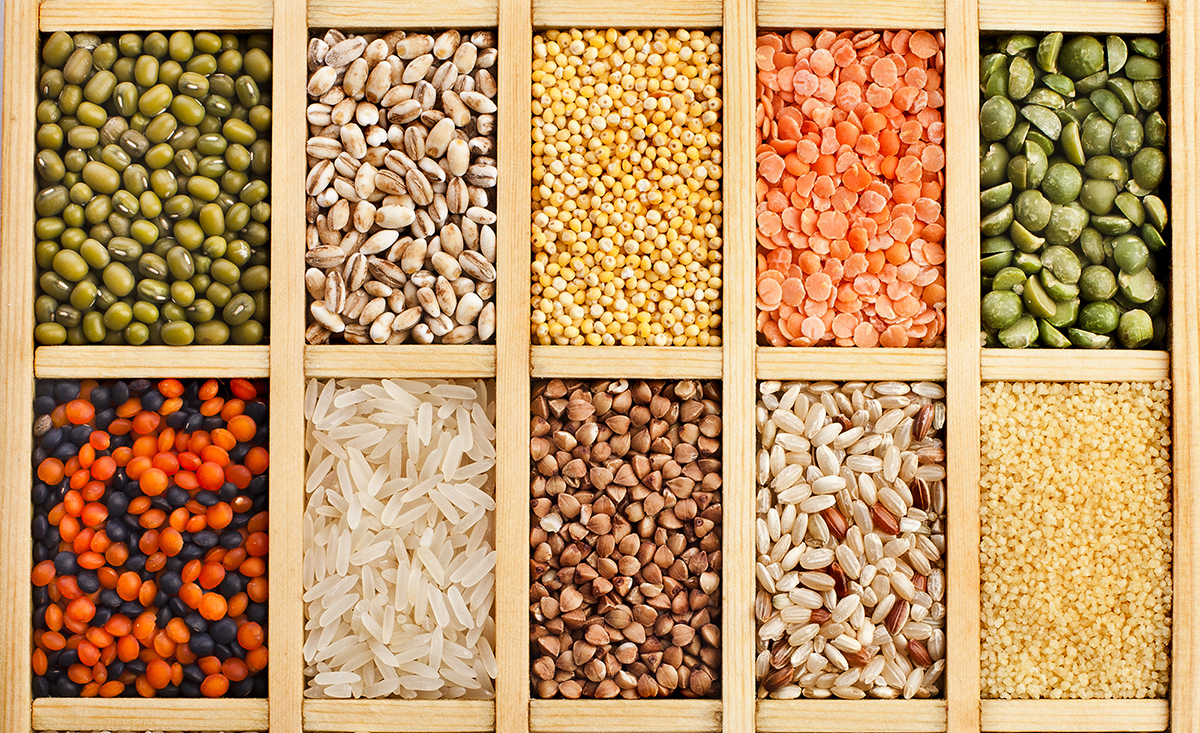
It’s hard to find one man-made super food, let alone 4, that offers protection for your heart, brain, bones, joints, and keeps your skin looking ageless to boot. Yet, that’s exactly what these 4 super seeds do.
1. Pumpkin seeds. Pumpkin seeds have long been regarded as a potent medicine since the days of the ancient Greeks. And, they’re still used as medicine today by Native Americans. They’re chock full of nutrients that offer significant health benefits to your heart, brain, and bones.
For your heart, pumpkin seeds are high in monounsaturated fatty acids which help lower LDL “bad” cholesterol and raise HDL “good” cholesterol. Because they’re alkaline in pH, they also cool down vascular inflammation which leads to heart disease.
High in the amino acid L-tryptophan, pumpkin seeds help fight depression as well as help you sleep. Studies show that lack of sleep leads to daytime depression and aging changes of the brain. Also high in the B vitamins which support nerves and all their functions.
Pumpkin seeds are high in zinc, a crucial mineral that older people are commonly deficient in. Zinc helps prevent osteoporosis that affects older people, especially post menopausal women. Their anti-inflammatory properties also help turn off the pain of joint conditions like arthritis.
Pumpkin seeds have also long been used to help treat frequent urination from an enlarged prostate that can affect older men.
2. Flax seeds. Flax seeds are one of the best multi-tasking nutrients around.
First, they’re high in Omega-3 fatty acids which protects your heart, brain, and your entire body from disease promoting inflammation. They also prevent blood platelets from clumping together and forming dangerous clots.
Secondly, flax seeds are a natural phytoestrogen which greatly benefit older women in relieving the symptoms of menopause and post menopause. Phytoestrogens are plant estrogens that the body can convert to use as it needs. They also have major antioxidant properties that fight free radical damage in skin. You see this damage on your skin as brown spots, lines, wrinkles and sagging.
Third, flax seeds help lower blood sugar levels and fight obesity. Because of their high lignan oil content, they help dampen hunger. Flax seeds can be added to the diet easily by adding 1 tablespoon to cereals, stir-frying with vegetables, or blending with smoothies.
3. Sunflower seeds. These easy seeds are really powerhouse nutrients disguised as a cheap snack.
They’re full of betaine, an important digestive nutrient, which everyone over 40 could use a little more of. Betaine helps you break down the nutrients in your food so that your body can absorb them better. They also contain fiber which helps sweep toxins from the colon.
They’re also full of Vitamin E, a powerful antioxidant that keeps your heart and brain healthy. Recent studies published in several medical journals have shown that higher intakes of Vitamin E may not only help prevent the onset of Alzheimer’s disease, but also help slow the progressive decline of already established Alzheimer disease.
4. Chia seeds. Many people don’t realize these are much more than seeds to grow those crazy “chia pet” plants with. Chia seeds are one of Nature’s best kept nutritional secrets.
They are loaded with antioxidants – some nutritionists say even more than blueberries; they’re high in fiber which makes the little carbs they contain almost nil; they’re also high in important minerals like manganese, magnesium, phosphorus, calcium which helps build strong bones. They’re also a good source of potassium which helps regulate your heartbeat and keep your nerves functioning properly.
Studies on patients with type 2 diabetes have also shown that eating chia seeds for breakfast lowered inflammatory blood markers (C-RP) by 40%. In addition, they lowered blood pressure by several points in the upper and lower readings. Chia seeds can also be an easy added source of protein for older people concerned with maintaining muscle strength. Because they don’t need to be ground before eating, they’re very easily added to your diet. Sprinkle a 1 ounce serving on salads, in stir-fry vegetables, or roasted with meats.
It’s hard to believe that such simple and basic foods like seeds could have such profound effects on your health and longevity. If you’re looking for some simple ways to protect your health and fight aging, adding more of these delicious seeds to your diet can help.
healthyliving June 10th, 2016
Posted In: Cancer Prevention
Tags: antioxidant, bones, brain, calcium, heart, joints, magnesium, manganese, phosphorus, phytoestrogen, Preventative Medicine, Super Foods, Zinc

If you’re over 40, I don’t have to tell you that you’ve probably gained some unwanted pounds. You may also feel like you’re lacking in the energy department too. But, you don’t have to resign yourself to weight gain and low energy just because you’re getting older.
I hear it all the time from my patients. They watch what they eat, they exercise, but the scale doesn’t seem to budge a bit every week. They get frustrated and start to resign themselves to carrying around those extra pounds. They start to give up on getting into better shape thinking they just don’t have the energy to get there. That’s when we have a little talk about some easy ways they can fire up their metabolism to make all their efforts worthwhile. Let me explain…
Your energy levels are crucial to how good you feel as you get older. If you’re feeling chronically tired, a visit to your doctor might be in order first to rule out any underlying issues. After that, these simple metabolism re-chargers can get you feeling more energetic quickly. At the end of 1 week you should see the scale start to move downward again.
healthyliving June 10th, 2016
Posted In: Cancer Prevention
Tags: build muscle, caffeine, eat more often, energy, exercise, hydration, hypothyroid, sleep